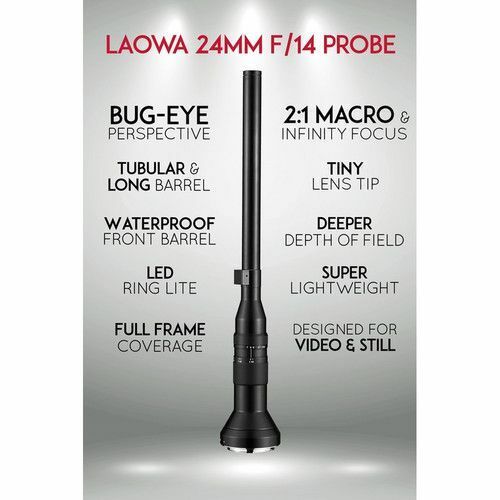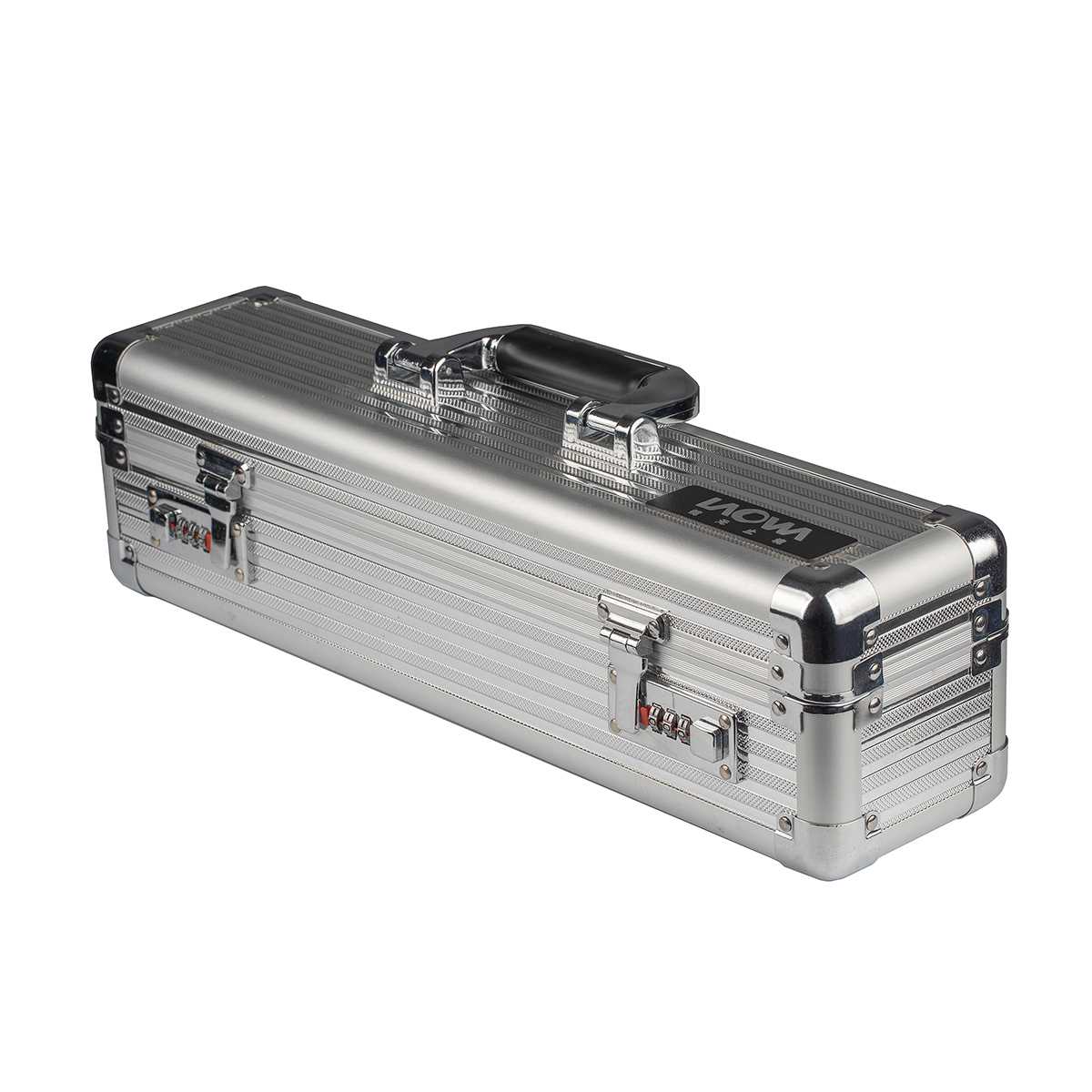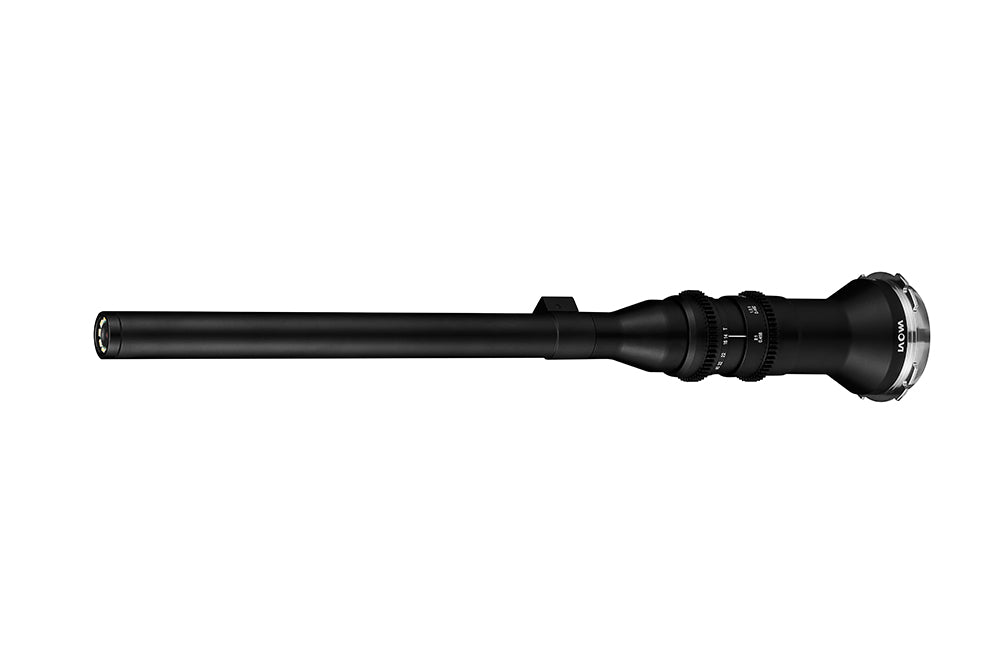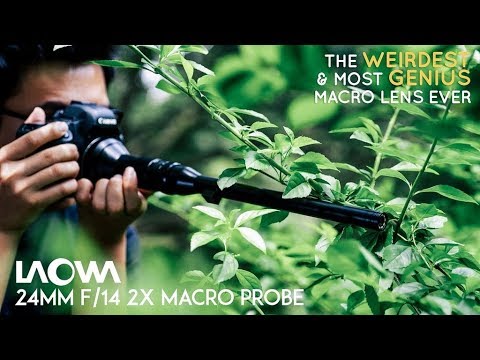Product Description
Laowa 24mm f14 Probe Lens for ARRI PL (Cine-Version)
- PL-Mount Lens/Full-Frame Format
- Aperture Range: f/14 to f/40
- Two Extra-Low Dispersion Elements
- One Extra Refractive Index Element
- Magnification: 2:1 to Infinity
- Min. Focus: 1.5'; Working Distance: 0.8"
- Integrated Focus and Aperture Gears
- Long Lens Barrel, Small Front Diameter
- Built-In LED Ring Light, Micro-USB Power
- Waterproof Front Lens Barrel

Described as "weird but genius," the ARRI PL-mount Laowa 24mm f/14 Probe Lens from Venus Optics is a truly unique lens designed for close-up shooting. Distinguished by its long and slender lens barrel, this macro lens provides a 2:1 maximum magnification with a 1.5' minimum focusing distance and a close 0.8" minimum working distance. Even with such a close working distance, the lens measures 1.3' long, placing you at a comfortable distance to photograph nearby subjects. Also, as a wide-angle lens, greater depth of field is afforded when compared to traditional telephoto macro lenses, allowing for greater detail in the background with less subject isolation.

The optical design includes both extra-low dispersion and extra-refractive index elements, which help to suppress chromatic and spherical aberrations for a high degree of clarity, color accuracy, and sharpness. Manual focus control permits focusing from 1.5' to infinity, and the front of the lens has a built-in LED ring light to aid in focusing at close distances. The slim 0.2" diameter of the front of the lens barrel also offers greater opportunities for lighting subjects from the front. Additionally, the front portion of the lens is waterproof and permits working with subjects just beneath the surface of the water or in dusty or trying environments.

This "cine-mod" version of the lens has been optimized for video use and features integrated gears on both the aperture and focus rings for doing iris and focus pulls using a follow focus.
Unique macro lens design offers a greater-than-life-sized 2:1 maximum magnification along with a minimum focusing distance of 1.5' and a working distance of just 0.8".

The long tubular lens barrel contributes to producing a distinct bug-eye perspective and, despite the short working distance, the length of the lens barrel places the camera at a comfortable shooting distance.
Wide-angle 24mm focal length affords greater depth of field and more surrounding detail than traditional telephoto macro designs, which tend to isolate subject matter with shallow depth of field.

Optical design includes two extra-low dispersion elements that control color fringing and chromatic aberrations to produce greater clarity and color accuracy. One extra refractive index element is also featured, which reduces spherical aberrations and distortion for improved sharpness and accurate rendering.

Slim 0.8" front diameter allows performing unique "slide-in" shots as well as affords a greater range of close-up, inconspicuous shooting opportunities. The smaller front diameter also makes it easier to illuminate close-up subjects from the front.
The front of the lens is waterproof, allowing you to comfortably work just under the water surface or in dusty environments.
The front of the lens has a built-in LED ring light which is powered via a micro-USB port on the barrel, providing some illumination on close-up subjects for easier focusing.

Designed for use as a close-up macro lens, the manual focus operation also lets you focus at infinity.
This "cine-mod" version of the lens has built-in focus and aperture gears to aid in doing focus and iris pulls.
Seven-blade diaphragm contributes to a pleasing bokeh quality.


























